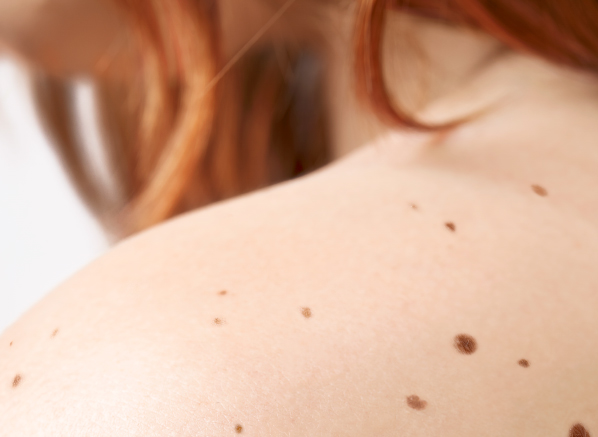

Are you checking your moles? Yes? Keep at it! No? You’re not alone. Until recently, I thought only people in hot countries needed to check their moles or those who use sunbeds. I was wrong and putting myself at risk. Just like women should check their breasts for lumps, checking your moles for melanoma (skin cancer) is a quick task that could save your life.
Knowledge is power when it comes to staying safe in the sun, so I called in Consultant Dermatologist Dr Zainab Laftah to answer all of your (and my) mole-related questions. Prepare to become an expert…

Why is it important to check your moles?
Melanoma is the third most common skin cancer in the UK, with over 15,000 new cases diagnosed each year. Melanomas are moles that have turned cancerous, and the outlook is better with early detection and treatment.
Who is most at risk of developing skin cancer?
Risk factors that increase your risk of skin cancer include;
• Pale skin that burns easily
• History of blistering or peeling sunburn
• Sunbed use
• Excessive sun exposure
• Personal and/or family history of melanoma
• Having many and/or unusual looking moles
• Taking medicines that weaken the immune system
How do I check my moles?
It’s recommended to check your moles once a month. Use a full-length mirror in a well-lit room to check your body all over. Ask a friend or partner to check difficult sites like the scalp and back. Don’t forget to check your underarms, your palms and the soles of your feet.
Tip: If you don’t think you’ll remember what your moles look like, take photos on your phone and pop them in a folder to refer back.
What should you look for when checking moles?
Check your skin regularly for new moles or any existing moles or freckles that have changed in size, shape or colour. Use the ABCDE tool as guidance to monitor changing moles for;
A is for Asymmetry – check if the two halves differ in shape
B is for Border – check if the edges are irregular, jagged or blurred
C is for Colour – check if the colour is uneven, or if different shades of black, brown or pink are present
D is for Diameter – most melanomas are at least 6mm in size
E is for Evolving – changing moles
As well as checking my moles, what else can I do?
Practicing safe sun exposure is essential for reducing your risk of skin cancer. Key steps include;
1. Use a broad spectrum sunscreen with minimum SPF 30.
2. Reapply sunscreen regularly every 2 hours, immediately after swimming or sweating to avoid getting sunburn.
3. Protect the skin further with suitable UPF clothing, a wide-brim hat and UV-blocking sunglasses.
4. Seek the shade between 11am and 3pm.
5. Keep babies and children out of direct sunlight.




